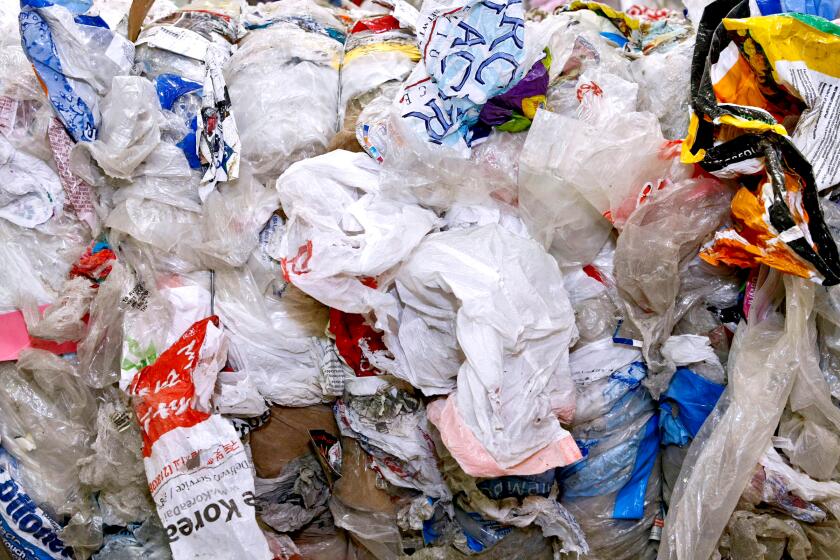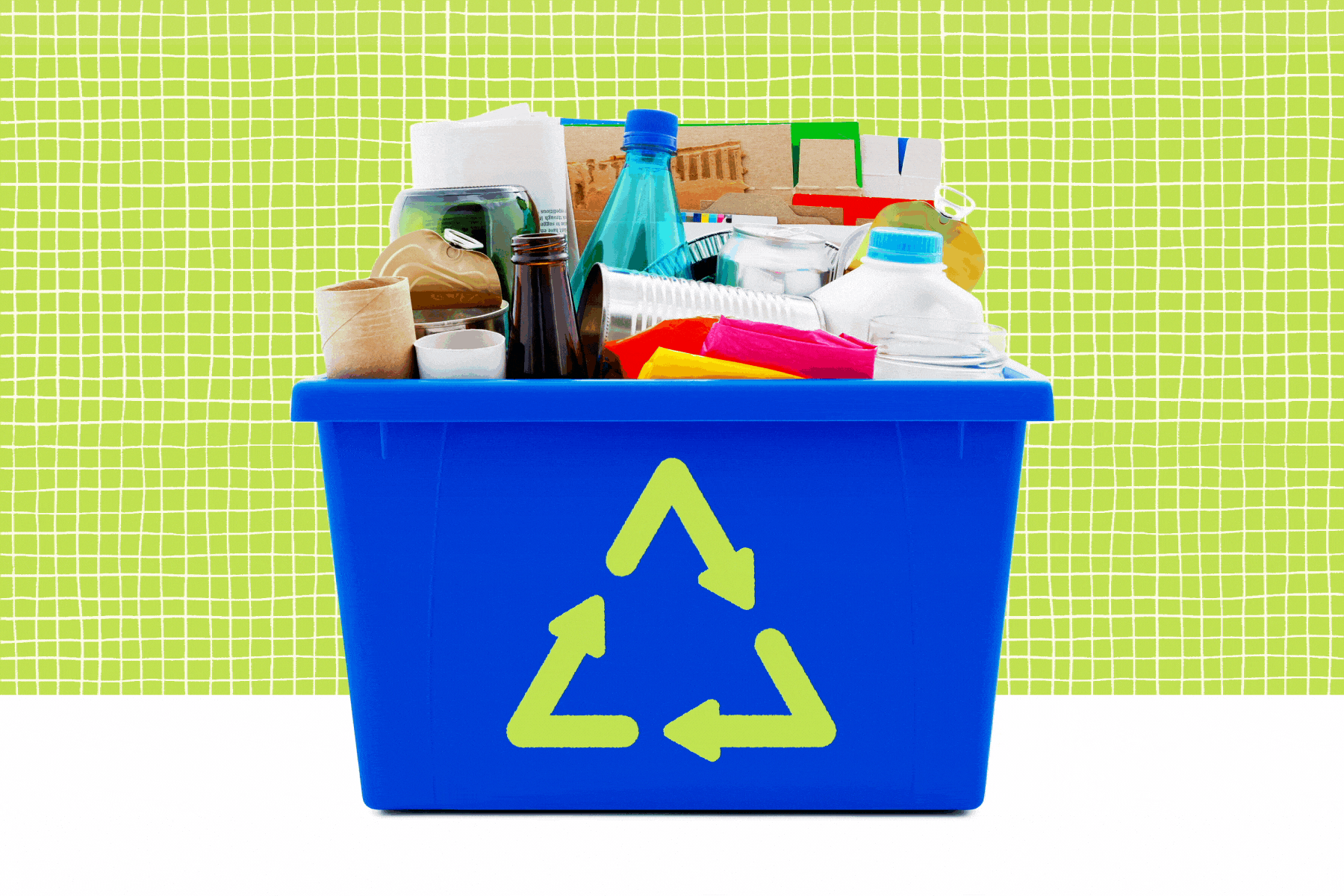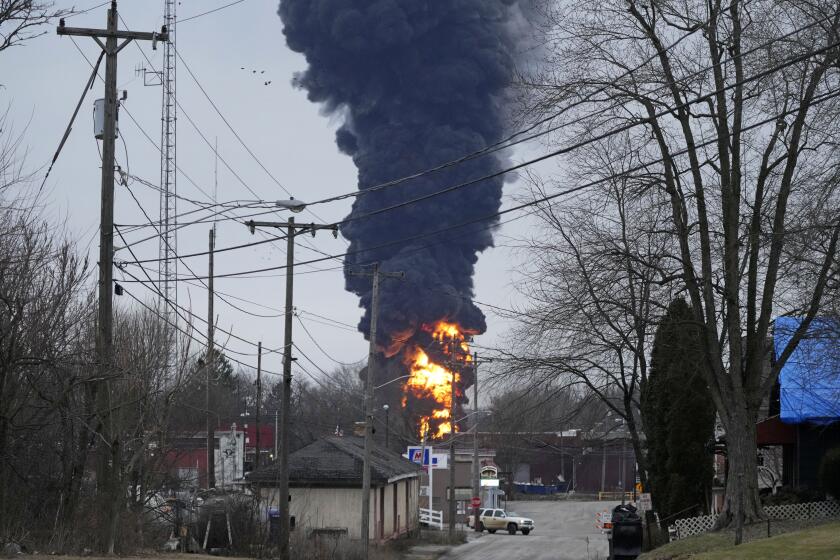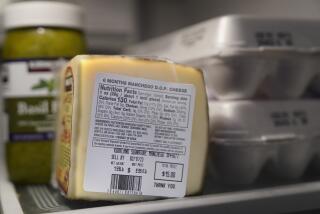Opinion: California faces an uphill battle against plastic
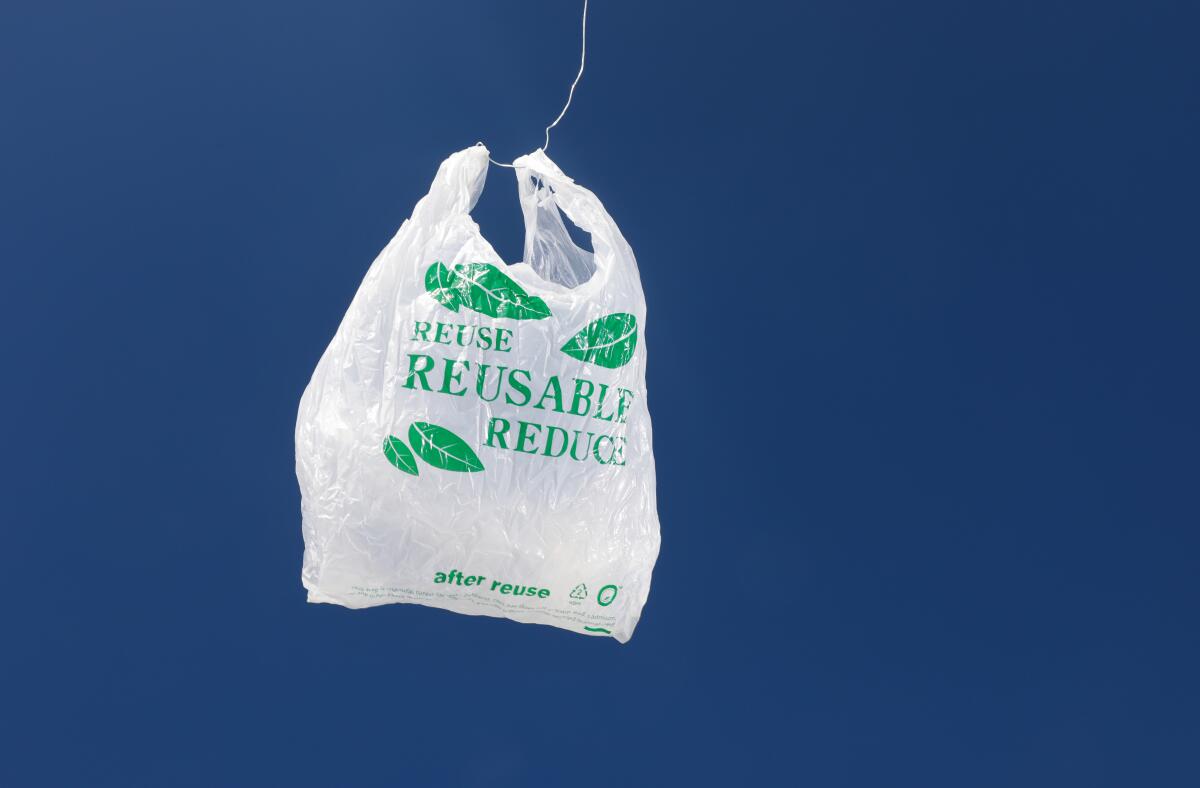
- Share via
Given its green bona fides, it’s no surprise that California was the first state in the nation to ban single-use plastic bags 10 years ago. Many were hopeful that would make a dent in the plastic pollution crisis, one canvas tote bag at a time. But if you’ve been to a California supermarket recently, you may have noticed that plastic bags aren’t gone — they’re just thicker.
What happened? The plastic bag companies got a caveat in the legislation allowing grocery stores and large retailers to sell plastic bags for a minimum of 10 cents each if they are reusable and recyclable in California. The problem is that the terms “reusable” and “recyclable” were bendable. Manufacturers just swapped low-density polyethylene (LDPE) for high-density polyethylene (HDPE), making the bags heftier, and stamped the chasing-arrows recycling symbol on the bottom. (Polyethylene is a hormone disruptor and environmental pollutant.) But few people reuse these bags in practice, and recycling centers in the state don’t typically accept them.
Ten years after California passed landmark legislation to reduce plastic bag use, the tonnage of discarded bags has skyrocketed. What happened?
This loophole is unfortunate but not shocking. The petrochemical industry has a long history of bobbing and weaving attempts at regulation and control. If we’re going to actually reduce our use of plastics, we have to outsmart those tactics.
Synthetic plastics, which are almost exclusively made from chemicals sourced from fossil fuels, have been produced for more than a century and become ubiquitous. The producers of many petrochemicals have been aware of the risks, such as birth defects, for decades. But they kept damning studies under wraps, and it took the burgeoning environmental movement of the 1970s for the potential health and environmental harms to reach the public’s radar.
By the time the EPA was established in 1970 and tasked with combating pollution, plastics and chemicals used in their production, synthetics such as polyvinyl chloride (PVC), polychlorinated biphenyls (PCBs), bisphenol A (BPA), per- and polyfluoroalkyl substances (PFAS) and phthalates were already in countless products, including paints and nonstick pans. Hundreds of studies have since linked exposure to such chemicals to a wide range of health problems, including cancer, infertility and lower IQ.
So to curb that damage, we’ve been stuck playing catchup — with limited success.
We asked, hundreds of you answered, sharing your habits, your struggles and what you think can be done better to reduce plastic waste.
For example, in 1976 Congress passed the Toxic Substances Control Act, which instructed the EPA to ban the production of PCBs, a suspected carcinogen that was commonly found in electrical equipment, sealants and other building materials. The law kept this chemical out of new plastics, paints and other products. However, since PCBs are virtually indestructible and used worldwide, little could be done to remove existing PCBs from the environment and protect future generations from its harm. Individuals as well as states and cities such as Oregon, Seattle, Vermont and East St. Louis, Ill., have sued Monsanto, which was the sole producer of PCBs in the U.S., to force the company to pay for the harm done to children and the environment.
In the 1980s, state and local governments began considering legislation restricting or banning plastic products. To thwart this, fossil fuel and petrochemical companies began aggressively peddling the myth that we could solve the plastic waste problem by recycling, which they knew was dubious. In reality, most plastics cannot be recycled. The consequences of this deception are now the subject of an investigation by California Atty. Gen. Rob Bonta into Exxon Mobil and other companies.
Fast forward to today, the slippery petrochemical industry has yet to let regulators get a grip on the problem. The switch from LDPE to HDPE in plastic bags demonstrates one of the industry’s go-to moves, known as regrettable substitution. That’s when one chemical is publicly discovered to be harmful, phased out and then replaced with a chemical cousin that turns out to be similarly harmful. It gives way to a whack-a-mole situation, with scientists and lawmakers struggling to keep up with one regrettable substitution after another.
The train that derailed in Ohio last month was carrying vinyl chloride, used to make PVC plastics — which we need to use less.
For example, after decades of agitation and consumer activism to remove the hormone-disrupting industrial chemical BPA from baby bottles, water bottles, pacifiers, food containers and other products, the consumer movement celebrated the industry’s claim that it was now producing BPA-free products. This was a pyrrhic victory, however, because the chemical industry substituted other bisphenols, specifically BPS and BPF, which may be at least as harmful as BPA.
As for plastic bags, companies capitalized on the COVID-19 pandemic to delay efforts to cut back on single-use bags, claiming inaccurately that those were more sanitary than reusable totes.
In California, legislators are now trying to patch loopholes in the state ban and more clearly define “reusable” to exclude the thick bags. However, even those efforts could be hampered, given the industry’s track record of maneuvering around restrictions. Disposable plastic is a corporate profit maker that will not be stopped by actions aimed at one product.
California’s landmark 2022 law takes a more comprehensive approach by requiring that 65% of plastic items sold, distributed or imported into the state be recyclable by 2032. But the law includes a vague exemption for materials with “unique challenges,” which the industry can exploit.
Learning from past failed recycling mandates, the law does set clear deadlines and fines for noncompliance. At minimum the government should leverage this to hold polluters’ feet to the fire, hauling them to the courthouse if necessary.
Rebecca Fuoco is director of science communications at the Green Science Policy Institute. David Rosner, a professor of sociomedical sciences and history at Columbia University, and Gerald Markowitz, a history professor at John Jay College of Criminal Justice, are authors of the forthcoming “Building the Worlds that Kill Us.”
More to Read
A cure for the common opinion
Get thought-provoking perspectives with our weekly newsletter.
You may occasionally receive promotional content from the Los Angeles Times.
